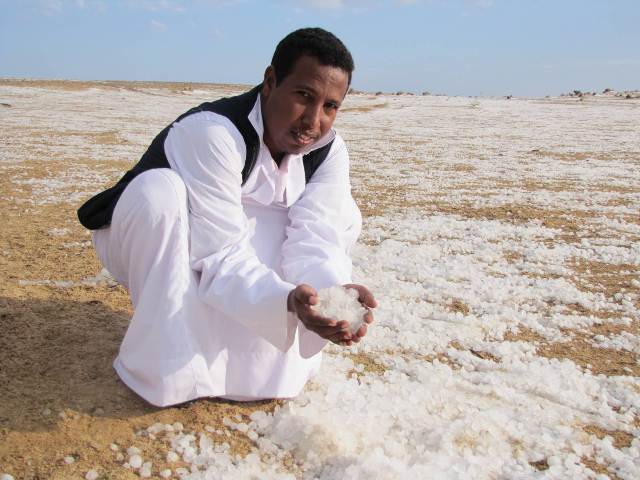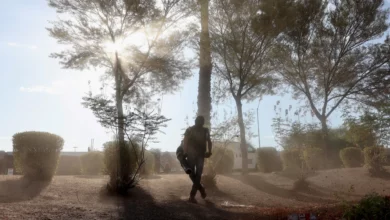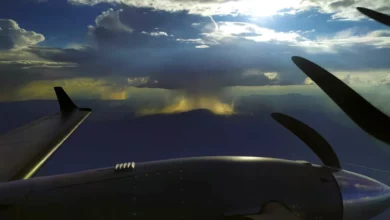
After decades of drought and high temperatures, Gebel Elba National Park witnessed, for the first time in its history, hail covering its desert plain last week.
Some researchers argue that this new phenomenon raises an important climate change message, posing a challenge for ecologists and meteorologists.
Hail is a form of precipitation that falls from the sky as pellets of ice, ranging in size from pea-sized to the size of grapefruits in the most extreme cases.
Gebel Elba National Park stretches from 50 kilometers north of Shalateen all the way south to the Sudanese border, and extends westward roughly 100 kilometers into the Eastern Desert.
Ali Hamed, one of Gebel Elba’s leading researchers who monitored the hail, says the area suffered from drought for over 20 years, which led to the displacement of large numbers of animal species, including tigers, and threatened the region’s plant life.
“The ice pellets covered more than half a [kilometer] in Aicuan Valley in the southwest of Halaib, whereas smaller quantities fell in scattered areas in Marquan and Al-Shalal valleys,” he says. “The hail precipitation damaged the tree leaves and the grass, and broke shrub branches in the area. In addition, about 20 goats and sheep died as a result of this unexpected weather.”
Hamed stresses that the park administration, in coordination with the social affairs and local administration, intend to compensate for all the damages and provide help for those who were affected by the hail.
Usama Ghazali, former head ranger of Gebel Elba National Park, asserts that this curious case deserves to be studied in depth. Understanding the reasons behind it would, he says, help understand how it will affect the weather during the coming years.
“We can’t judge anything now,” he says. “As a part of our program for studying Gebel Elba’s climate through monitoring rains and weather temperatures, the hail-fall case was recorded as a ‘phenomenon’ that we plan to monitor and study.”
In his opinion, the hail highlights the need to shift attention in the discourse on climate change from northern to southern Egypt.
“Most studies on climate change only focus on the Delta region, although Egypt’s south needs to be monitored closely as well. In the past, we used to have savannah forests in the south, but over time, climate change has turned them to dry deserts,” Ghazali explains.
He says he hopes the hail signals the end of extensive drought periods in the Eastern Desert.
“I hope that it indicates the comeback of rainy weather that might turn the area into green pastures, as it used to be,” he says.
This piece was originally published in Egypt Independent's weekly print edition.




